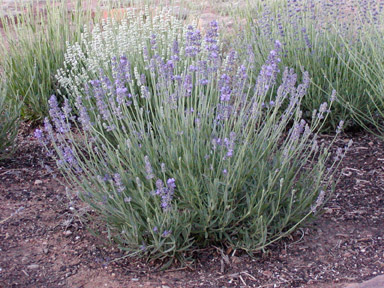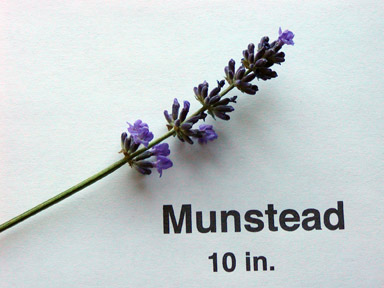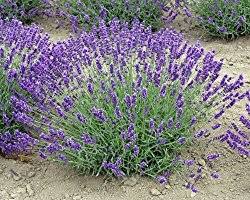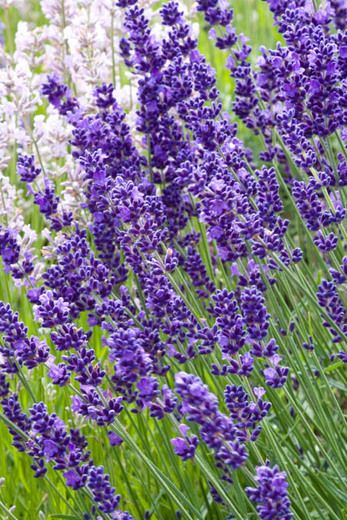English lavender bushes are smaller than the Intermedia types.
They have less oil and are best for culinary use
 |
 |
Lavender, English 'Hidcote' - Lavandula angustifolia 'Hidcote'
Description
"Hidcote Lavender has long been one of the most sought after Lavandula angustifolia varieties. According to The Genus Lavandula, while this Lavender was named after the estate of Lawrence Johnston, there are no records which verify that this plant actually started out life in his garden known as Hidcote Bartrim. It is more likely that he brought it with him from his estate in France in the 1920's. It is also sometimes referred to as Hidcote Blue or Hidcote Purple." (mountainvalleygrowers.com)
"Hidcote Blue Lavender (Lavandula angustifolia Hidcote Blue) is an improved strain of Hidcote English Lavender with darkly colored lavender-blue flower spikes in late spring. Compact and sweetly fragrant." (highcountrygardens.com)
 |
 |
Lavender, English 'Munstead'- Lavandula angustifolia 'Munstead'
Description
"‘Munstead’ is a compact, early-flowering English lavender cultivar that was first introduced into commerce in 1916. It is a semi-woody perennial that typically grows to 12-18” tall and as wide. Lavender blue flowers appear in terminal spikes in late spring well into summer. Munstead’ was reportedly named for Munstead Woods in England where the plant was grown by garden designer Gertrude Jekyll (1843-1932)." (missouribotanicalgarden.org)
 |
 |
Lavender, English 'Royal Velvet' - Lavandula angustifolia 'Royal Velvet'
Description
"‘Royal Velvet’ is a 3 ft tall specimen, erect with an open habit, with silvery-grey foliage. Flower stems are long, up to 16 inches, and very upright. The flower spikes can be up to 5 inches long. Flower petals (corollas) are bright violet-blue, and calyces are dark violet, with a bit of green at the base. This selection blooms in mid-summer, with great flowers for drying and crafting. It is not a good selection for oil. It is a beautiful specimen plant for large hedges. It was first grown at Norfolk Lavender in England after the Second World War." (morningsunherbfarm.com)
Internet Resources